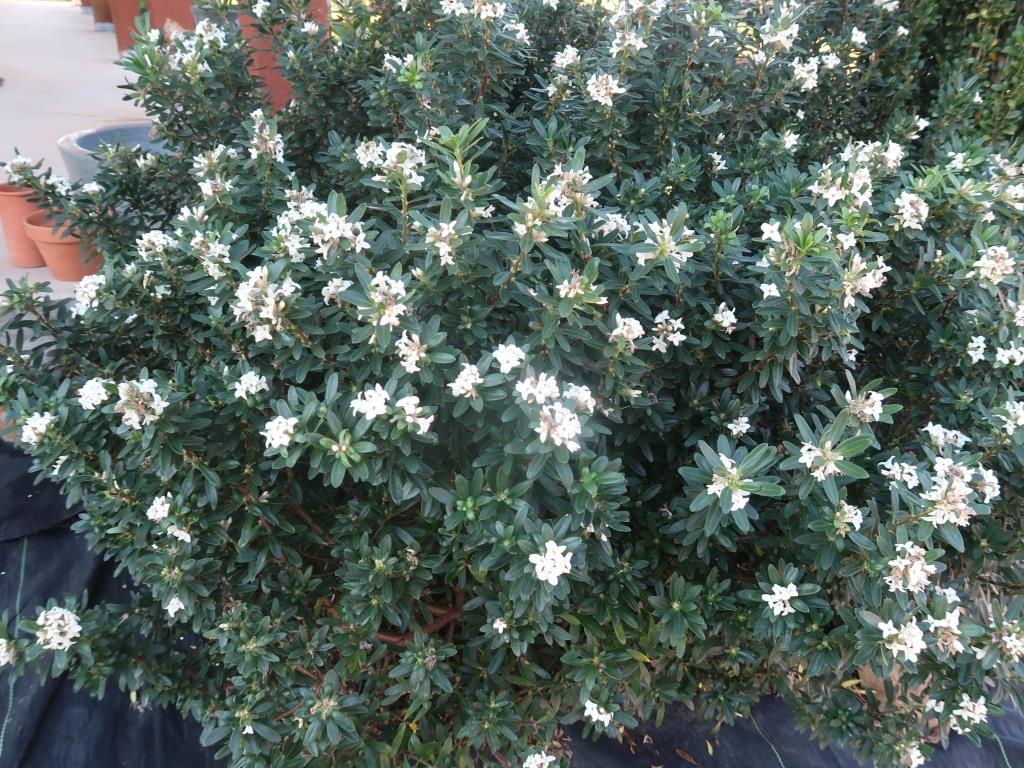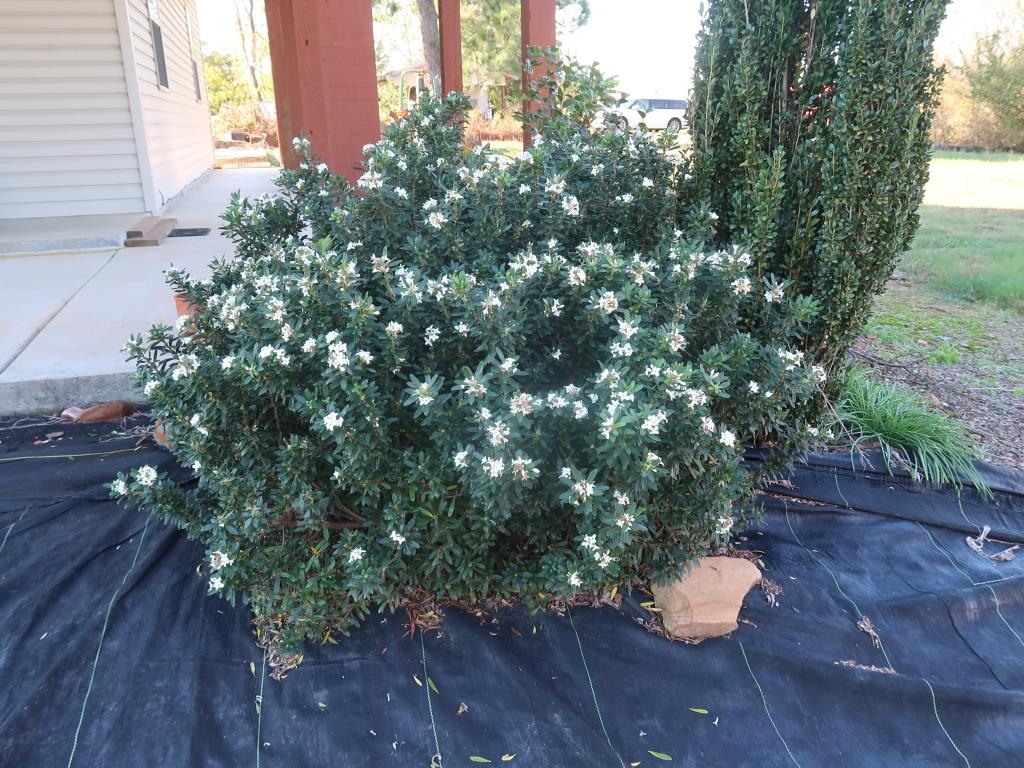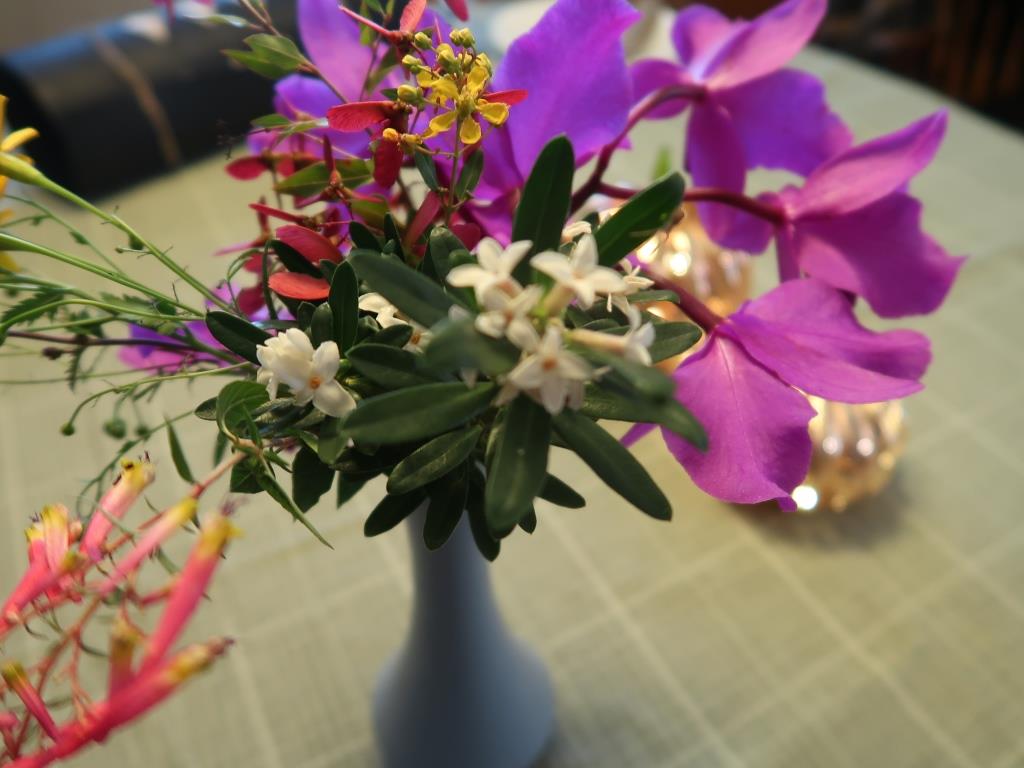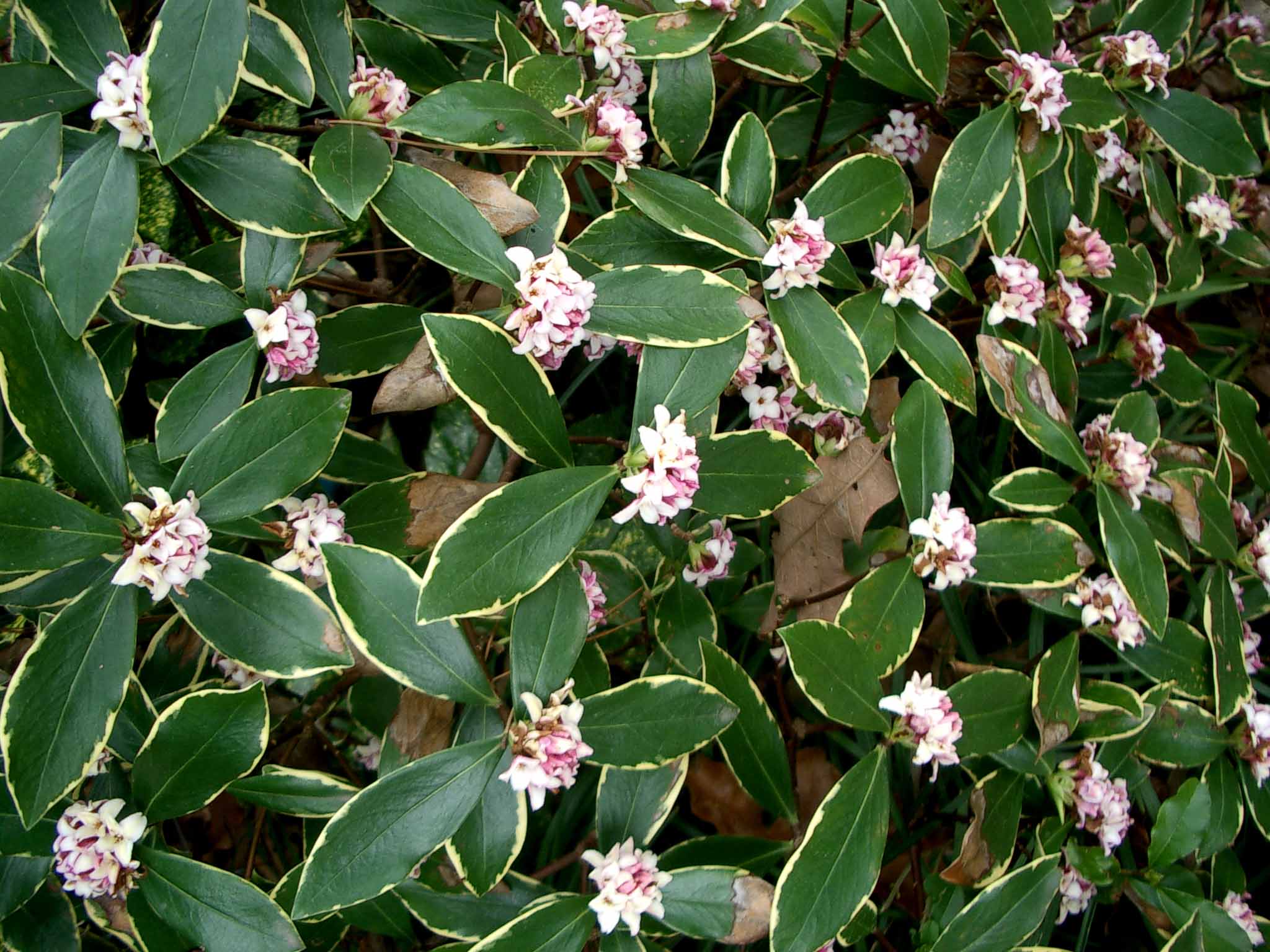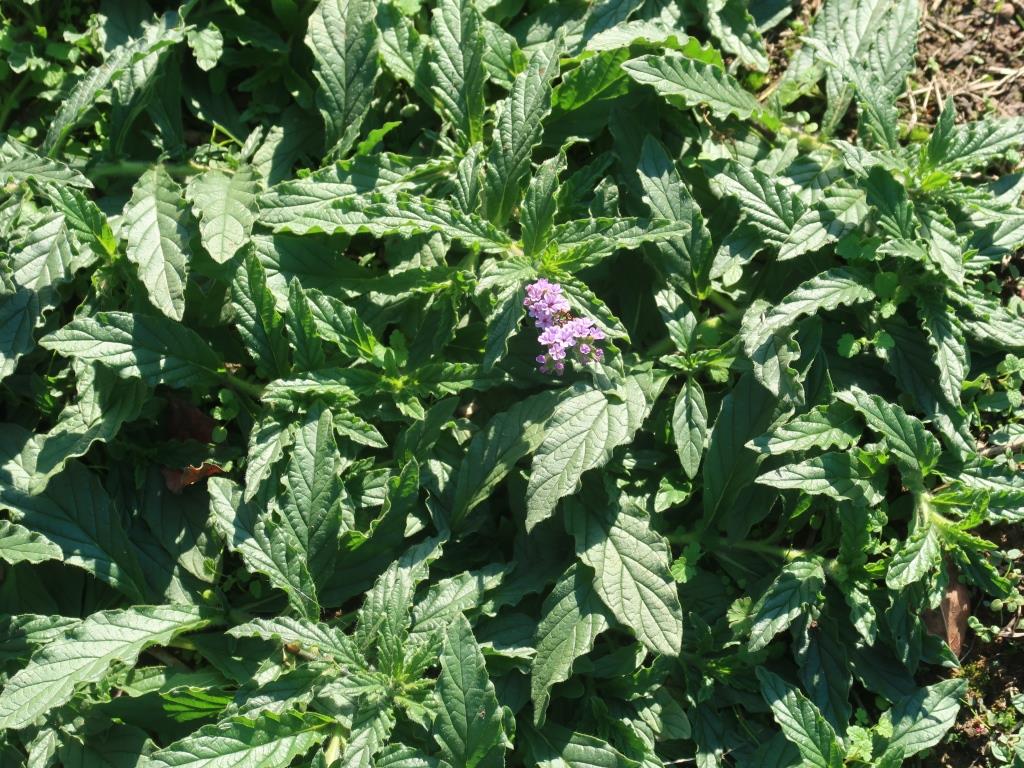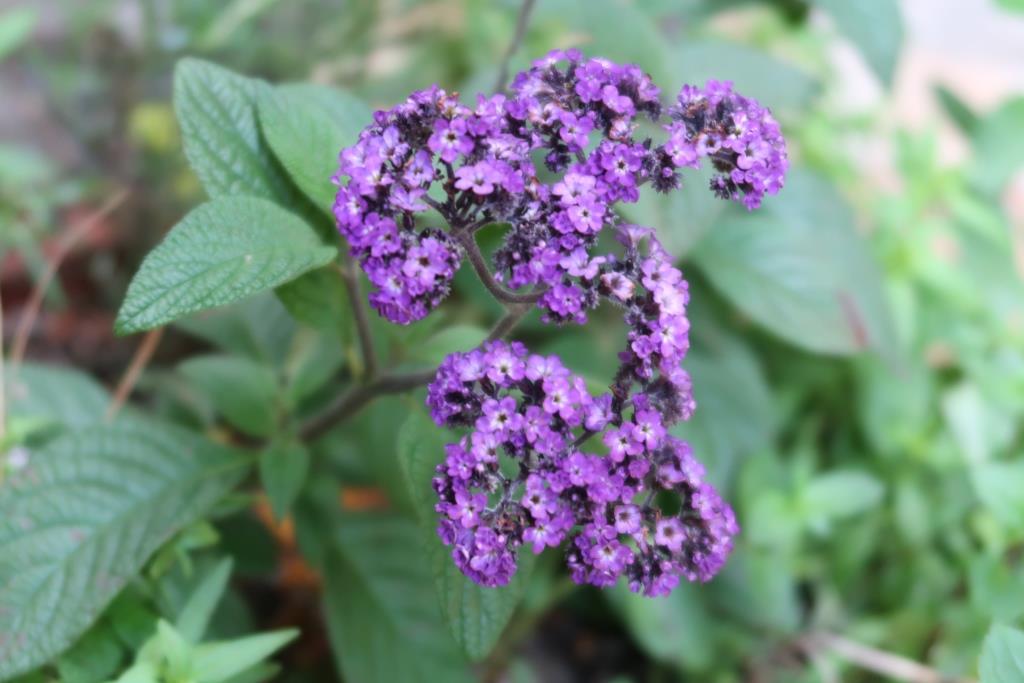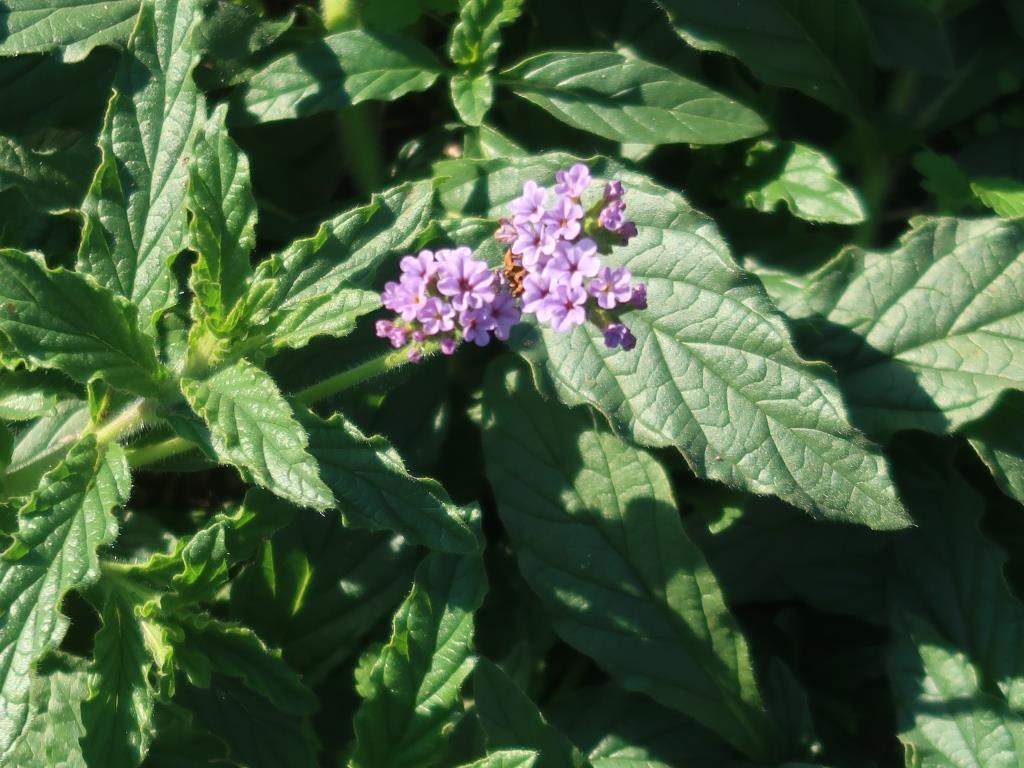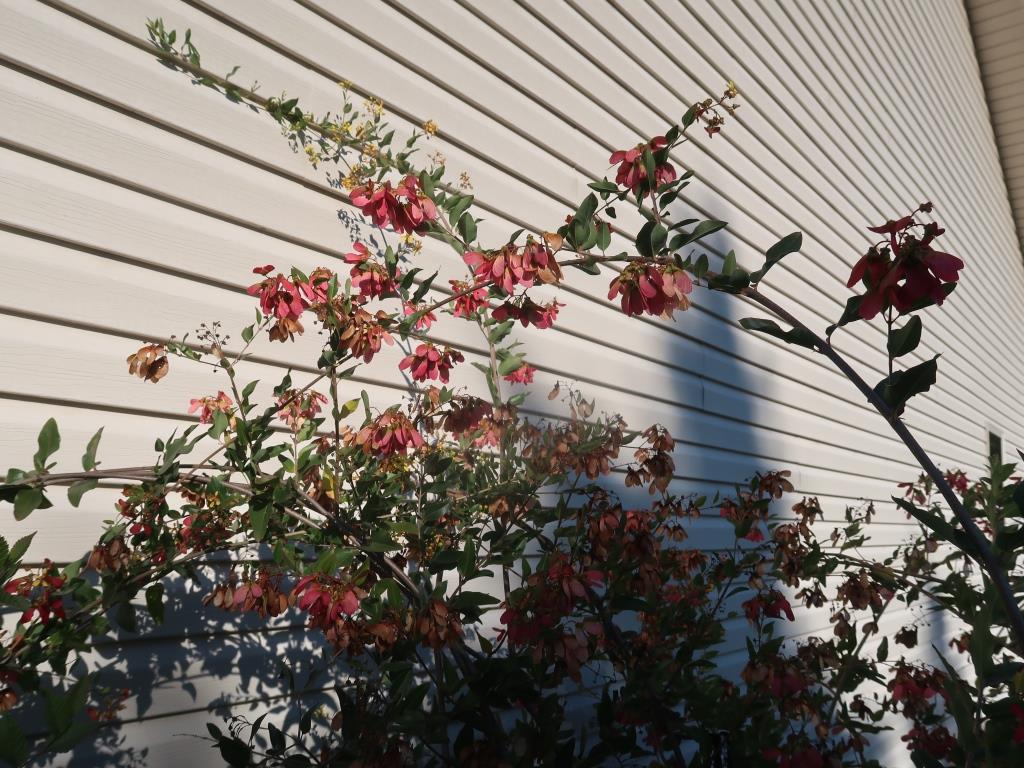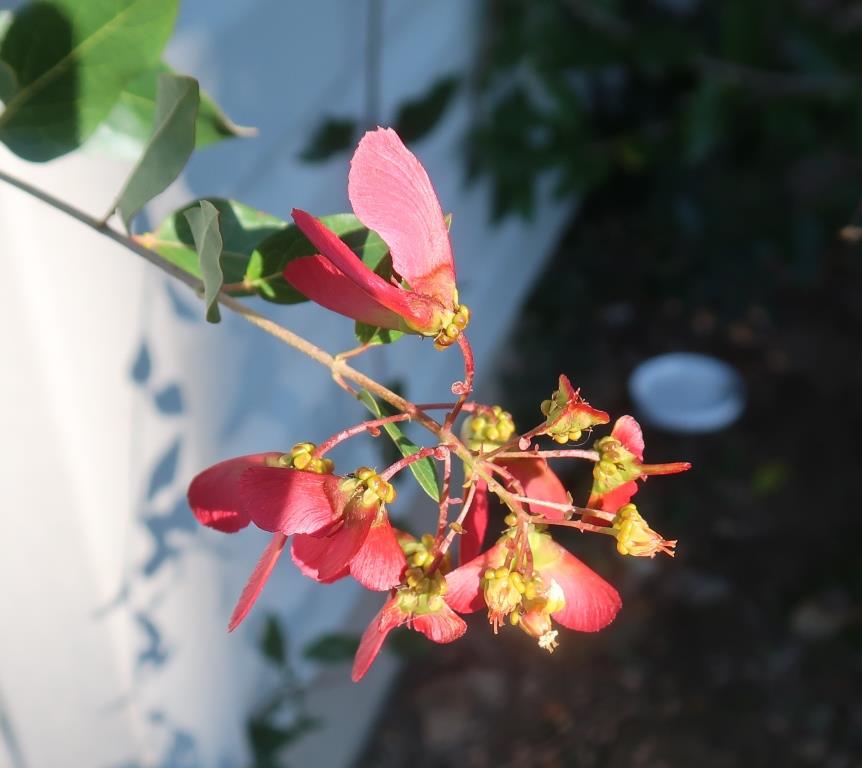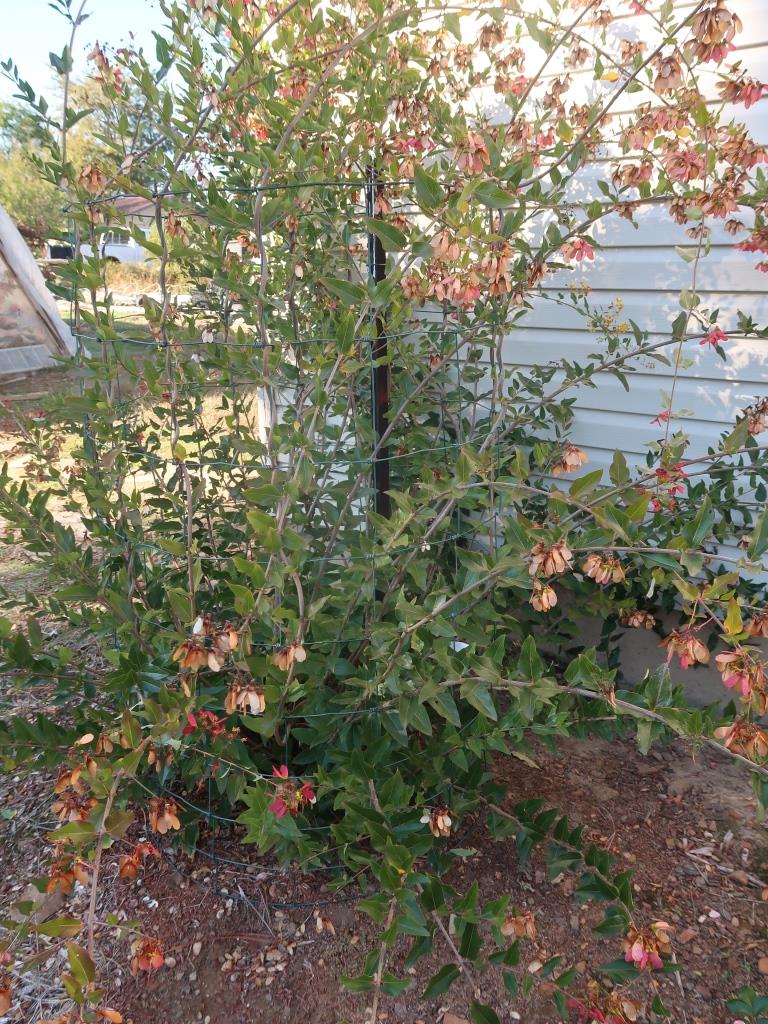Daphne Eternal Fragrance – Daphne x transatlantica ‘Blafra’. This plant was growing in Stan Brown’s yard in Clarksville. It had been in the ground several years.
It is evergreen, blooms from late spring through fall with fragrant white flowers. Daphnes are not a beginners plant—they can be finicky, slow to establish and prefer to be left alone, once planted. They need extremely well drained soil, but moisture in the summer, particularly when it is hot and dry. Stan says he does nothing to his plant and it had NO damage last winter. But Stan is Stan—he can grow anything easily. Plant this either in a raised bed or elevated to insure good root drainage. Give it full morning sun or dappled shade. Afternoon shade is advisable in Arkansas. Daphnes are well known for their intensely fragrant flowers.
This daphne hybrid is a cross between D. caucasica (deciduous female) and D. collina (evergreen male). I grew a winter daphne Daphne odorata for years.
It was one of my favorite plants. It only bloomed in late winter/early spring. It lasted in my garden for about 10-12 years, then gave up the ghost. I have looked for one locally for years with no luck. I think I will be planting some daphnes next spring.
Creeping heliotrope – Heliotropium amplexicaule -
Creeping heliotrope is a perennial, unlike the finicky annual heliotrope.
(Allen Owings tells me there is a new annual version coming out in 2022 that is more heat tolerant). This perennial one has been growing in Clarksville now for years. It does best in sun or part shade with occasional watering.
It should be pinched through summer to promote rebloom and to keep more compact. It will spread by rhizomes and can serve as a groundcover. Creeping heliotrope tolerates drought and survives neglect. This low growing perennial grows to 2-3 feet wide and is clothed with hairy, toothed 2-inch-long leaves that appear to clasp the stems. The violet flowers with yellow centers line one side of the forked and curled-back flower stems over a long period from spring into fall. Hardy to around 30° F as an evergreen perennial but will resprout from roots and can be grown in gardens in colder climates with claims it is root hardy to 20° F and useful in gardens in USDA zones 6 and 7. Pinch back occasionally through summer to promote rebloom and to keep more compact and watch for it to spread a bit from rhizomes. It is very attractive to bees and butterflies. Clasping Heliotrope comes from tropical South America.
Redwing Vine – Heteropterys glabra
or Redwing as it is commonly known is one of about 150 species of plants in the genus. This genus in found throughout South America, the Caribbean. Gold flowers appear by early summer in bright sprays
followed quickly by brilliant red fruits that closely resemble maple achenes or “wings”. Redwing will continue to produce flowers alongside the fruit into the fall for a continuous hot combination. The foliage on this vine emerges flushed with burgundy before turning glossy green. Redwing is a woody vine that will grow up a support or through the lower branches of small trees or large shrubs. The stems will twine gently providing support for the upright growth. Without support, it will make a mounded, shrubby plant with branches weaving through its neighbors.
Young plants will often die back to the ground for their first couple of years in the garden but once established the stems will stay green during all but the coldest winters. It is doing quite well in this Clarksville garden where it is several years old, surviving just fine last years brutal winter. Planting Heteropterys in a sunny spot ensures the best flower and fruit show but it will grow well in a shadier location. It may need some training to grow up a structure when young or it can be planted under a low branched tree. It tolerates considerable drought and root competition once established but will be more prolific in a slightly moist, well-drained soil.

